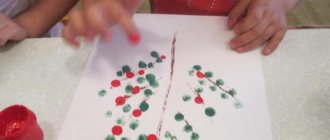Reading stories about plants is an important element of the aesthetic education of children. Works of classical literature are best suited for this purpose.
The most popular authors who worked on natural history topics are N. Sladkov, K. Ushinsky, M. Prishvin, S. Aksakov. Their works not only help children develop speech and creative thinking. They reveal even in a simple blade of grass and an ordinary dandelion a whole world and a special character.
This selection offers the most stories by these authors that are suitable for reading to children. Dandelions, birches, water lilies, reeds - all the plants described by the classics live their own lives and help people.
Spring
Ushinsky K.D.
The days begin to noticeably increase from the middle of December; and by March 9th it will take half a day. That’s why the beginning of spring is counted from March 9th. In spring, the sun not only stays in the sky longer, but also warms up noticeably more every day.
The snow begins to melt little by little, and water runs in streams from the ground into rivers and lakes. Soon the ice on the rivers will give way to the influence of the sun's rays. Large polynyas appear along the banks of rivers. Another week will pass - and all the ice will rise with the rising water, turn black, begin to break, and loose ice floes will rush down the river. At this time, there is so much water in the river that it cannot fit into the banks: it protrudes and spills over the surrounding meadows. A river flood is called a water field. Another river is so small that in the summer they could ford it; it spills into the water field for five, six miles or more. Our Mother Volga, into which thousands of rivers and rivulets flow, spreads out like a sea in the spring. People rush to take advantage of the short-lived wealth of water, and large barges loaded with goods sail in the spring where chickens almost wander in the summer.
At first, thawed patches appear in the fields, but soon the ground, wet and saturated with water, appears everywhere from under the snow. Another week will pass, then another, and the snow will only remain somewhere in a deep ravine where the sun does not shine. The sky is getting bluer and the air is getting warmer.
Not all the snow has yet melted when new, bright green grass begins to appear here and there, near the old yellowed grass. In the fields where peasants have sowed rye or wheat since the fall, winter crops rise and turn green, like green velvet.
Along with the grass, the first flowers appear. A blue snowdrop emerges from under last year's leaves in the forests. Here and there a yellow dandelion appears, the same one that will eventually put on its fluffy white cap, round like a ball and so light that you just have to blow on it and it will all fly apart.
The trees also awaken from winter sleep and, warmed by the sun, are filled with juices. If you cut through the bark of a birch or maple tree at this time, sweet and fragrant sap will drip from under it.
The leaf buds have been prepared by the tree since autumn. All winter they remained in one position and were barely noticeable; now they begin to quickly fill up, grow, shed their brown husks and unfold into green leaves.
Fluffy flowers, or lambs, appear on the willow. You probably noticed them on the willow branches on Palm Sunday? Then barely noticeable, sticky and fragrant birch leaves appear. Another ten days passed - and the curly, bright green birch tree, with its white, neat trunk, stood decorated as if for a holiday: cheerful, bright, fragrant. Behind the birch, linden, alder, and oak are in a hurry to bloom. The palmate leaves of the maple do not take long to appear. Shrubs and trees in front of each other are in a hurry to dress up for the spring festival. At first, the greenery on the trees seems liquid, because the leaves are still small, and in some places there is still black earth visible through the bright green grass. But the leaves and grass grow quickly, and by May everything will turn green: the groves will again become impenetrable, and the fields will be full of thousands of flowers. In winter, monotony reigns: all the same snow. But in the spring, every day something new appears: then the blue eye of a forget-me-not will peek through; then a fragrant cup of lily of the valley will unfold, but yesterday it was not there; then the white strawberry flowers will sparkle in the greenery, from which juicy, red berries will emerge by the end of spring. Cherries, apple trees, and pears are covered with white and white-pink flowers. Everything celebrates spring, everything blooms and smells fragrant.
Spring does not begin at the same time everywhere. The further south you go, the earlier spring gets. In Crimea, flowers are picked already in February, and in Arkhangelsk you can freeze your nose in April.
Birds, along with spring, appear in abundance. The rooks are the first to arrive and remind us with their screams that spring has begun. They almost always appear around March 9th. But then the lark, rising high in the air, sang its sonorous song. Fast, sharp-winged swallows arrive a little later. Starlings, blackbirds, waders, wild pigeons, and cuckoos appear one after another and inhabit fields, forests and groves that were recently silent.
High in the air, flocks of cranes, wild ducks, geese and swans stretch from south to north. Soon the nightingale will begin her sonorous song. Some of these birds, wild geese, cranes, swans, fly further; others stay with us all summer; those that remain begin to build nests: they rush around, scream, work, collect dry twigs, straw, moss, grass.
Busy ants, colorful butterflies, clumsy beetles, and then unbearable mosquitoes and midges, thousands of the most diverse flying and crawling insects come into the light of God. A hardworking bee, having slept through a long winter in a warm hive, wakes up, leaves its wax cell and flies to collect sweet honey from flowers.
There is noticeably less change in the animal kingdom. Wild animals are rarely seen at all. But you can’t help but see how happy livestock are about spring. After standing in barns for a long winter, horses, cows, and sheep happily run out into the field, and the shepherd doesn’t have to call them out of the house for long with his long pipe.
People are happy about the first snow, but they are also happy about the first flowers. Every season brings its own pleasures and its own worries. Double glazing is taken out in houses; fresh air and bright light rush into the room. Sounds from the street, which could not be heard behind the double glass for six months, are heard loudly. And for the peasants there is so much work to be done! But they are not afraid of work. Over the winter, bread, oats, hay and even straw - everything will be converted: one for food for people, the other for feed for livestock. We need to get to work so that we have something to eat for next fall and winter.
The peasant straightens the cart, adjusts the harrow and plow, and when the earth has warmed up a little and dried out, he goes to the field. He plows, harrows the field and sows spring crops on it, which must be sown and harvested in the same year: oats, buckwheat, barley, millet. In the gardens they dig ridges, plant potatoes, onions, peas, beans, cabbage; they sow hemp, beets, carrots, turnips. In the capitals, wealthy people move to their dachas, where gardeners arrange flower beds, plant and sow flowers. The poor man also rejoices in the spring: thank God - it has become warmer! God's sun shines freely for everyone, equally for everyone; less firewood is needed and the thin dress is more bearable.
Fairy tale for children
AZALEA AND WHITE CAT
In one big city there lived a kind woman. Her name was Maria. Her children grew up and moved away. But she had a cat of amazing beauty - white, fluffy, with huge blue eyes and pink ears. “What a handsome man!” - everyone admired. The cat allowed his silky fur to be stroked, he nodded his head and purred, contentedly: “Pur, pur, pur, you speak correctly.” Yes, the cat in Maria's house was the center of attention. But suddenly everything changed.
It was Christmas Eve, and Maria, having decided to decorate her house, went to the flower shop. There were all sorts of flowers here: multi-colored chrysanthemums, lush begonias, delicate impatiens cyclamens and snow-white gardenias were beautiful, but Mary’s eyes settled on azaleas. “Which one should I choose? White or purple, or maybe pink, with a white border around the edge of the petals? Finally, Maria chose a fluffy pink Azalea with many delicate buds.
They packed the azalea and explained to Maria that this flower loves moisture, bright light and coolness, and can bloom for a very long time. Maria, thanking the owner of the flower shop, happily hurried home.
The pink beauty Azalea illuminated everything around with a gentle, joyful light and, looking at her, I wanted to smile. Friends who came to visit could not take their eyes off her. And they seemed to have completely forgotten about the white cat...
“What injustice,” the offended handsome man grumbled to himself. And when one of Maria’s friends, an old artist, decided to draw a miracle flower, the cat, out of anger, tore a piece of wallpaper from the wall and was punished. Maria threatened that next time she would cut off his claws for such a trick. The cat hid offendedly behind the sofa and did not show itself to Maria for a long time.
But Maria did not forget about her pet cat. It’s just that there had never been such a miracle in her house before, and she tried her best to prolong its flowering. Maria’s care bore fruit, and every week Azalea delighted her hostess with new blooming flowers.
The cat became more and more gloomy. "Who is she? Just a plant. When all her flowers wither, what will remain of her beauty? Nothing,” he reasoned angrily.
One day the cat almost bit off the Azalea flowers. On this day, Maria gently whispered about something to the flower, and then opened the window so that the flower could breathe fresh air. The cat could not stand the winter cold, and a gust of cold wind drove him crazy. “I’m not going to catch a cold because of this princess,” thought the cat, and in one jump he found himself near Azalea. At that moment Maria entered the room. The cat instantly ducked under the sofa. Maria didn’t even have time to notice him. However, the sight of Azalea cowering alarmed her. “I probably over-cooled it,” Maria thought and closed the window. She carefully examined the flower, but Azalea quickly came to her senses, and Maria calmed down.
The cat, watching this scene from under the sofa, was surprised: “But she’s not a sneak! She didn’t give me away, she didn’t complain!”
The next day, when the sun smiled welcomingly at Azalea, a large sunbeam slid along the wall and stopped right above the shelf with ceramic pots. The white cat considered himself the smartest cat in the world, but could not understand that a sunbeam is just a reflection of a sunbeam. Obsessed with the desire to deal with the sunbeam at any cost, he completely forgot about his venerable age and jumped all over the room like a little kitten. And now, he instantly jumped onto the table, then onto the shelf and touched one of the most beautiful pots with his fluffy tail. The pot fell and broke into pieces. The frightened cat was confused, but suddenly heard a gentle voice:
- Hurry up, hide behind my green back!
Azalea watched this whole scene, and she felt sorry for the good-for-nothing handsome man from the bottom of her heart. The cat rushed with all his cat's paws to the flower and hid behind its fluffy branches strewn with flowers. The azalea had grown so much that the cat was completely invisible behind it.
Maria came running at the noise. Not seeing anyone except Azalea, she thought that the wind that blew sharply through the open window was to blame.
When Maria left, the white cat said to Azalea:
“You are the kindest Azalea in the world.” Probably because of your kindness, your flowers do not wither for a long time. Please forgive me.
From that day on, the white cat became friends with the beautiful Azalea and protected her as best he could. Azalea was happy - she had acquired a faithful friend, and what could be more beautiful than this?
>>
Questions and tasks for the fairy tale:
Show children photographs or drawings of azaleas. How do you think azalea differs from other plants? Describe her.
Why do you think Mary liked the azalea the most of all the flowers?
Have you ever come across a houseplant that made you happy?
Do you think the azalea was happy when Mary bought it? Can plants be happy or, conversely, sad about their fate?
Draw an azalea from a fairy tale. What was her character like? What has changed in the white cat thanks to this wonderful plant?
Do you think houseplants and pets can really be friends? Which pets prefer which houseplants and why? Write short stories on this topic.
Teach children about azaleas and how they are grown indoors. Keep a notebook on houseplants and write down basic information about azaleas.
Are only flowering plants attractive? Are there any indoor plants that look beautiful even when they are not blooming?
Sultry afternoon
Aksakov S.T.
I have always loved and love the heat of our short summer... The sultry afternoon is blazing. Perfect silence. The wide pond, green as a spring meadow, covered with grasses, does not sway, as if sleeping in its sloping banks; the reeds stand motionless.
The mainland and the grass-free channels shine like mirrors; the rest of the water is overgrown with various aquatic plants. Either bright green or dark-colored leaves spread across the water, but their roots go deep into the muddy bottom; white and yellow water lilies, the color of burdocks, simply called pitchers, and red flowers of dark grass protruding above long, cut-out leaves diversify the green carpet covering the surface of the pond.
What a luxury of warmth! What bliss and benefit to the body! How pleasant is the proximity of water and the opportunity to refresh your face and head with it!
The fish is also hot: it seems to be sleepy standing under the shade of the grass. Seeing tasty food, only for a moment it lazily swims out to clean places, pierced by the sun's rays, grabs the prey and hurries under its green canopies.
Golden Meadow
MM. Prishvin
My brother and I always had fun with them when dandelions ripened. It used to be that we would go somewhere on our business - he was in front, I was at the heel.
Seryozha! - I’ll call him in a businesslike manner. He will look back, and I will blow a dandelion right in his face. For this, he begins to watch for me and, like a gape, he also makes a fuss. And so we picked these uninteresting flowers just for fun. But once I managed to make a discovery.
We lived in a village, in front of our window there was a meadow, all golden with many blooming dandelions. It was very beautiful. Everyone said: Very beautiful! The meadow is golden.
One day I got up early to fish and noticed that the meadow was not golden, but green. When I returned home around noon, the meadow was again all golden. I began to observe. By evening the meadow turned green again. Then I went and found a dandelion, and it turned out that he squeezed his petals, as if your fingers on the side of your palm were yellow and, clenching into a fist, we would close the yellow one. In the morning, when the sun rose, I saw the dandelions opening their palms, and this made the meadow turn golden again.
Since then, dandelion has become one of the most interesting flowers for us, because dandelions went to bed with us children and got up with us.
Fairy tale for children
HOME GARDEN
One day Maria noticed that the beautiful Azalea was sad. “We need to feed her with vitamins, she pleased me with flowers for a long time and probably spent a lot of energy,” Maria decided. But the vitamins did not help, Azalea still looked drooping. Maria became worried and decided to look in books about houseplants for the reason for her poor health. But books didn’t help her either. Then Maria decided to go to a flower shop, hoping that they would advise her on something suitable. The store offered her the same vitamins and a variety of indoor plants. Maria couldn’t resist and bought two of them - the colorful, handsome Croton and the fragile blue-eyed Violet.
“Look who I brought for you, dear Azalea,” she said, entering the room with her new pets, “maybe you will have more fun in their company.”
Imagine Mary’s surprise when the next morning she saw that her Azalea had indeed come to life.
“So this is the medicine my beauty needed,” thought Maria. “She just needed friends who could comfort her so that, no matter what, she would continue to enjoy life.”
So the beautiful pink Azalea began to make friends. And that was very good, because she was still a little sad after she finished flowering.
And Maria, seeing how her favorite smiles when every new flower appears in the house, turned the room into a wonderful home garden, which she herself could not get enough of. Relatives and friends admired the miracle Mary created. Even people indifferent to flowers, when they came to Maria, felt something special in her house, which made their souls feel good and calm. They began to look closely at the flowers and even asked the owner about her pets. At this point, Maria could not be stopped. She talked about flowers with such passion and love that the guests, unable to bear it, asked her for cuttings of any flower they liked. And this flower became the very first in their own home garden.
Previously, Maria knew little about indoor plants, but now, with the appearance of each new flower in the house, she sought to learn as much as possible about it. Sometimes she wondered to herself: “How did I live without flowers before? After all, they help me so much: they console me and make me happy, relieve fatigue and even heal me. If you look at them, all worries go away.” Now Maria always hurried home to her beloved pets. Her joy knew no end when she was given some flower in a pot. Smiling tenderly, she told him: “Welcome, dear flower, to our kindergarten! Don’t worry, you’ll be fine with us!” And the new flower, which until recently was worried about its fate, immediately calmed down and quickly got used to its new family.
Even the white cat got used to flowers and loved them. When a new indoor plant appeared in the house, the cat importantly approached it to introduce itself and licked its green leaves, but under no circumstances bit them.
Yes, the flowers lived a comfortable and cheerful life at Maria’s. She learned to feel her pets so well that without words she understood everything they wanted to tell her. They looked at their mistress with gratitude and filled the house with freshness and beauty. “How lucky we are!” - the flowers whispered, watching Maria take care of them. “It waters us precisely at the moment when we are thirsty; supports us with vitamins when we become weak; opens the window wide when we feel stuffy!”
Maria watered her pets with soft water at room temperature so that the roots did not get cold, and the leaves and buds did not fall off her pets. She loosened the ground so that the roots could breathe easier. When the flower grew and it became cramped in its pot, she transplanted it into a larger pot, adding fresh soil to it. She did not forget to wipe the leaves with a soft sponge, and then the flowers shone and radiated freshness. While caring for the flowers, Maria spoke tenderly to them, questioned them, calmed them down, and even sang songs to them. And how the plants rejoiced when Maria fed them with vitamins - after all, this had a wonderful effect on their tender sprouts! The sprouts grew stronger, the flowers were calm about their own children.
>>
Questions and tasks for the fairy tale:
Show the children photographs or drawings of indoor plants mentioned in the story.
Imagine that one day Maria invited you to admire her garden. Tell us about this visit. Draw Mary's garden.
Do you think a plant is always sad if it is alone? What would have happened to the azalea if Maria had not thought of buying other plants?
Draw a smiling azalea. Have you ever noticed that indoor plants smile? Can indoor plants laugh, worry, worry?
How do you think the plants felt when their leaves were licked by a white cat?
What kind of person should a person be to be able to understand the thoughts and moods of his plants?
What changed in Maria’s life when she got indoor flowers? How can flowers affect a person? Have there been times in your life when indoor plants changed your mood?
How did Maria treat her plants? Why did Maria’s garden look so elegant, since she had never planted flowers before?
What do you think Mary sang to her flowers and what she talked to them about?
Have you ever talked to your houseplants? Do you think plants understand humans?
If you decided to grow a home garden, what plants would be its first inhabitants?
What, first of all, is necessary to make your home garden look elegant? Does it depend on what plants you put in it, or does it depend on other conditions?
Do you think it’s worth learning as much as possible about the life of indoor plants before starting a home garden?
Why do you think some people, having bought just one indoor plant, never decide to start a home garden? What does a person need in order to make such a decision?
How a shirt grew in a field
Ushinsky K.D.
I
Tanya saw her father scattering handfuls of small shiny grains across the field, and asked:
- What are you doing, father?
- But I’m sowing flax, daughter; a shirt will grow for you and Vasyutka.
Tanya thought: she had never seen shirts growing in a field.
About two weeks later the strip was covered with green silky grass and Tanya thought: “It would be nice if I had a shirt like that.”
Once or twice Tanya’s mother and sisters came to weed the strip and each time they said to the girl:
- You will have a nice shirt!
A few more weeks passed: the grass on the strip rose, and blue flowers appeared on it. “Brother Vasya has such eyes,” Tanya thought, “but I’ve never seen such shirts on anyone.”
When the flowers fell, green heads appeared in their place. When the heads turned brown and dried out, Tanya’s mother and sisters pulled out all the flax by the roots, tied sheaves and put them in the field to dry.
II
When the flax dried out, they began to cut off its heads, and then they sank the headless bunches in the river and piled another stone on top so that they would not float up.
Tanya watched sadly as her shirt was drowned; and the sisters then told her again:
- You have a nice shirt, Tanya.
About two weeks later, they took the flax out of the river, dried it and began to beat it, first with a board on the threshing floor, then with a whip in the yard, so that the poor flax sent fire flying in all directions. Having frayed, they began to comb the flax with an iron comb until it became soft and silky.
“You’ll have a nice shirt,” the sisters said to Tanya again. But Tanya thought: “Where is the shirt? It looks like Vasya’s hairs, not a shirt.”
Ill
The long winter evenings have arrived. Tanya's sisters put flax on their combs and began to spin threads from it. “These are threads,” Tanya thinks, “but where is the shirt?”
Winter, spring and summer have passed, autumn has come. The father installed crosses in the hut, pulled the warp over them and began to weave. The shuttle ran quickly between the threads, and then Tanya herself saw that canvas was coming out of the threads.
When the canvas was ready, they began to freeze it in the cold, spread it on the snow, and in the spring they spread it on the grass, in the sun, and sprinkled it with water. The canvas turned from gray to white, like boiling water.
Winter has come again. The mother cut shirts from canvas; The sisters began to sew shirts and for Christmas they put new shirts, white as snow, on Tanya and Vasya.






